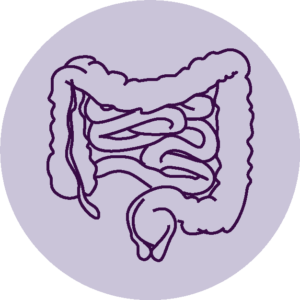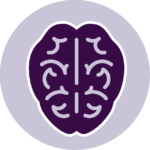Our research explained
Health risks related to preterm birth
overview
A baby born before completing 37 weeks of gestation is described as having been born preterm or prematurely. A preterm birth disrupts important developmental and growth processes which take place during the pregnancy in utero. Babies born preterm are at a greater risk for various health complications, some of which are described on this page.






Behaviour
"Preterm infants, when compared to term infants, are at higher risk of developing ADHD. Although the precise reasons for this observation are not fully clear, the brain of a preterm infant is far from being mature and many cellular and molecular events that will determine brain connectivity are still taking place. For example, neuroinflammation will impact some key mechanisms of brain development including the formation of synapses, the place where information is exchanged between neurons.”
Professor Pierre Gressens
Compared to term infants, preterm babies are at higher risk of developing attention-deficit/hyperactivity disorder (ADHD). The precise reasons for this are not fully clear. However the brain of a preterm infant is forced to develop outside the protective space of the uterus, and many cellular and molecular events that will determine brain connectivity are still taking place. Preterm birth can impact upon these developmental processes and alter the trajectory of brain maturation. Inflammation of the brain potentially links prematurity to brain maldevelopment and subsequent ADHD.
Autism spectrum disorders (ASD) are neurodevelopmental disorders. Research into ASD is revealing both genetic and environmental factors (such as preterm birth) as potential causes with risk factors including the length of gestation period, exposure to infection before or after birth which disturbs brain development, certain medicines such as antiepileptics, and atmospheric pollutants – both exterior and interior. Preterm babies are more likely to show signs or symptoms of ASD than those born at term. Emerging evidence indicates that the behavioural traits of with ASD born preterm and those with ASD born at term are subtly different. More work needs to be done to determine if preterm birth might lead to a specific sub-type of ASD.
Bowels
Necrotising enterocolitis (NEC) is an intestinal disease affecting approximately 7% of very preterm infants during their first weeks and months of life. It is the most common surgical emergency in newborn babies. NEC survivors often face life-long health challenges. For example, it is associated with a higher risk of poor neurodevelopmental outcomes.
Brain
Cerebral palsy is a term that describes a group of disorders that affect movement and posture. It is the most common physical disability in childhood. Although there is no single cause of cerebral palsy, preterm birth is a risk factor which substantially increases its occurrence. Preterm birth disturbs the process of brain development including the connections between muscles and brain and within the brain.
Further information about cerebral palsy can be found on the Cerebral Palsy Alliance website. The CPA has also contributed to the following fact sheets: What is cerebral palsy? and Diagnosis and treatment.
Encephalitis is inflammation of the brain and can be a cause of encephalopathy, a general term to describe injury to the brain. PREMSTEM Is investigating encephalopathy of prematurity which occurs due to preterm birth. Encephalopathy of prematurity includes damage to oligodendrocytes, the cells that make insulation to support neuronal connectivity. It also brings about changes in the types and location of interneurons which control whole brain excitability. This type of brain injury is driven by immune-reactivity of microglia. There are currently no treatments available to repair encephalopathy of prematurity.
Learn more about the brain and how different cells are affected by preterm birth.
Eyes
Did you know that babies born preterm are at higher risk of developing vision issues? One such cause of vision damage is retinopathy of prematurity (ROP) which is caused by the abnormal development of retinal blood vessels. It is most likely to occur in preterm babies born before 31 weeks of gestation as the retina develops late in pregnancy and preterm birth disrupts this phase of growth. Babies with mild ROP may not require treatment but in severe cases, it can mean lifelong vision impairment and blindness.
Further information about ROP can be found in EFCNI’s fact sheet, available in English and German.
Heart
Congenital heart defects present at birth mean that the structure of the baby’s heart is altered, disturbing blood flow to the body. The most severe congenital heart defects need to be treated with surgery or another type of procedure in the first weeks of life. Many infants require repeat surgeries in the first year of life. Congenital heart defects impact on the development of the whole body including the brain, putting infants at increased risk of cognitive impairments or neurodevelopmental disorders.
Patent ductus arteriosus (PDA) is a common issue among preterm infants. It occurs when the opening that is normally present between the left and right side of the heart during pregnancy dose not close by itself as expected as the infant transitions to life breathing on its own. This defect affects how effectively the heart can pump blood around the body and, if untreated, can lead to heart failure.
Infection
The body’s response to an infection or injury is called inflammation. Babies born preterm are at a higher risk of a damaging inflammatory response. Exposure of the foetus to inflammation is a common cause of preterm birth and brain damage in preterm-born infants. Foetal inflammatory response syndrome describes a severe inflammatory response and is a significant risk factor for brain injury and later neurodevelopmental problems.
Sepsis arises when the body’s response to an infection injures its own tissues and organs. Children under the age of 1 are in the high-risk group for sepsis with preterm babies more susceptible.
Kidneys
Babies born extremely preterm miss out on an important phase of nephron development and have a lower nephron count at birth. Nephrons are involved in the filtration and purification of the blood. The nephrons we are born stay with us (and even diminish in number) over our lifetimes. Preterm birth has been linked to kidney dysfunction or chronic kidney disease due to lower nephron mass.
Lungs
Research shows that babies born before 33 weeks of gestation are more likely to have asthma than those born at term. Fortunately, almost a quarter of babies born premature with childhood asthma outgrow their symptoms before they reach adulthood.
Asthma in the mother can also impact the health of the pregnancy. According to March of Dimes, asthma affects 4-8% of pregnancies. Women with asthma are at a slightly increased chance of preterm labour and delivery. When unmanaged, asthma makes breathing difficult and can reduce the amount of oxygen in the blood for the mother and the developing baby.
Bronchopulmonary dysplasia (BPD) is the most frequent complication of preterm birth. BPD is a form of chronic lung disease that occurs in newborns, especially preterm infants who require oxygen therapy. BPD permanently damages the structure of the tiny sacs in the lung where the transfer of gasses occurs. Animal and human pilot studies show that stem cell therapy is currently the most promising new intervention for the prevention of this chronic disease.
Due to their underdeveloped lungs, infants born preterm often have respiratory distress syndrome and need extra oxygen, synthetic surfactant or assisted ventilation to help them breathe in the early days of life. Although often lifesaving, ventilation may injure the delicate tissue of the lungs, cause inflammation and lead to the accumulation of excess fluid.
Respiratory syncytial virus (RSV) infects the lungs and airways. Preterm-born infants are vulnerable to being infected with RSV and may develop a severe lower respiratory tract infection such as bronchiolitis or pneumonia. These complications often lead to hospitalisation or admission to the neonatal intensive care unit and sometimes mechanical ventilation.
Further information about RSV can be found in EFCNI’s fact sheet, available in English and German.
